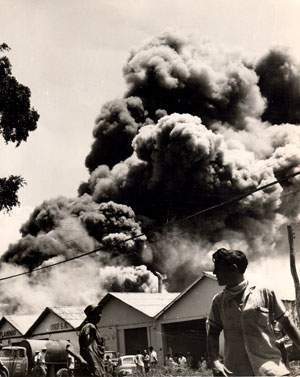
After the Bay of Pigs defeat in April 1961, President John F. Kennedy said: "My decisions on the Bay of Pigs were bad. I made bad decisions because I had bad information. My information was bad because our espionage was useless. Something very bad is going on inside the CIA and I want to know what it is".
Following these assessments, he made changes in the CIA leadership and approved Operation Mongoose on November 30, 1961, which he would lead together with his brother Robert, the U.S. Attorney General, whom he gave the reins of the intelligence community to oversee the new, vindictive aggression.
Operation Mongoose, a.k.a. Project Cuba, took distance from the previous one called Pluto, which fully relied on the invasion of a mercenary brigade of more than 1,000 troops who would set up a provisional government in Bay of Pigs, but their plans were thwarted in less than 72 hours.
Operation Mongoose included media campaigns, the establishment of a blockade, and the political and diplomatic isolation of Cuba in the region, where only Mexico kept relations with Havana. In addition, there was espionage, organized bandit uprisings in the countryside and terrorist acts in the city, such as the assassination of Cuba's top leaders, particularly Commander-in-Chief Fidel Castro, using anything from poisoned cigars to explosive devices.
The plan envisaged October 1962 as the date of a counterrevolutionary uprising across Cuba and the establishment of "liberated zones" that would justify a U.S. military intervention. To this end, the Kennedy brothers allocated endless funds and military supplies to the largest CIA station in the world, the Miami-based JMWAVE, which had hundreds of officers, shell companies, a small navy of boats and ships, and thousands of agents in the U.S. and Cuba.
Robert Kennedy is said to have enjoyed his new task, a far cry from his real duty of defending the law as Attorney General. CIA head John McCone obligingly gave him his office so that he could control the progress of the operation, playing the role of James Bond, the famous character of espionage novels to which he was very addicted. However, despite Robert’s cloak-and-dagger frenzy, Cuba neutralized most of the mercenary infiltrations, arrested more than 100 CIA agents and crushed the bandits in the countryside, who were controlled by and supplied from the Guantanamo naval base, where plans of a self-aggression were in the making to justify the direct involvement of the U.S. army.
Nevertheless, the Expanded Task Force led by Robert Kennedy kept Operation Mongoose going. According to declassified documents, he strived to speed up the covert plans and, by October 20, when the Missile Crisis had already begun following the detection of Soviet rockets in Cuba, he greenlighted an uprising in the province of Pinar del Río, except that most of those who would participate were either in prison or cooperating with Cuban Security.
Operation Mongoose was already unthinkable because of the October Crisis, as the United States lost the initiative. It was not until 30 years later, in the 1990s, that these plans were declassified. Many American researchers describe it as the greatest covert war carried out by the White House against another nation in peacetime, a conclusion that proved Cuba’s reason and right to protect itself from an ongoing aggression and to make an agreement with the Soviets to deploy nuclear rockets in the national territory.
Sidebar

 Agencia Cubana de Noticias
Líder en información nacional
Agencia Cubana de Noticias
Líder en información nacional








Nos reservamos el derecho de no publicar los comentario que incumplan con las normas de este sitio